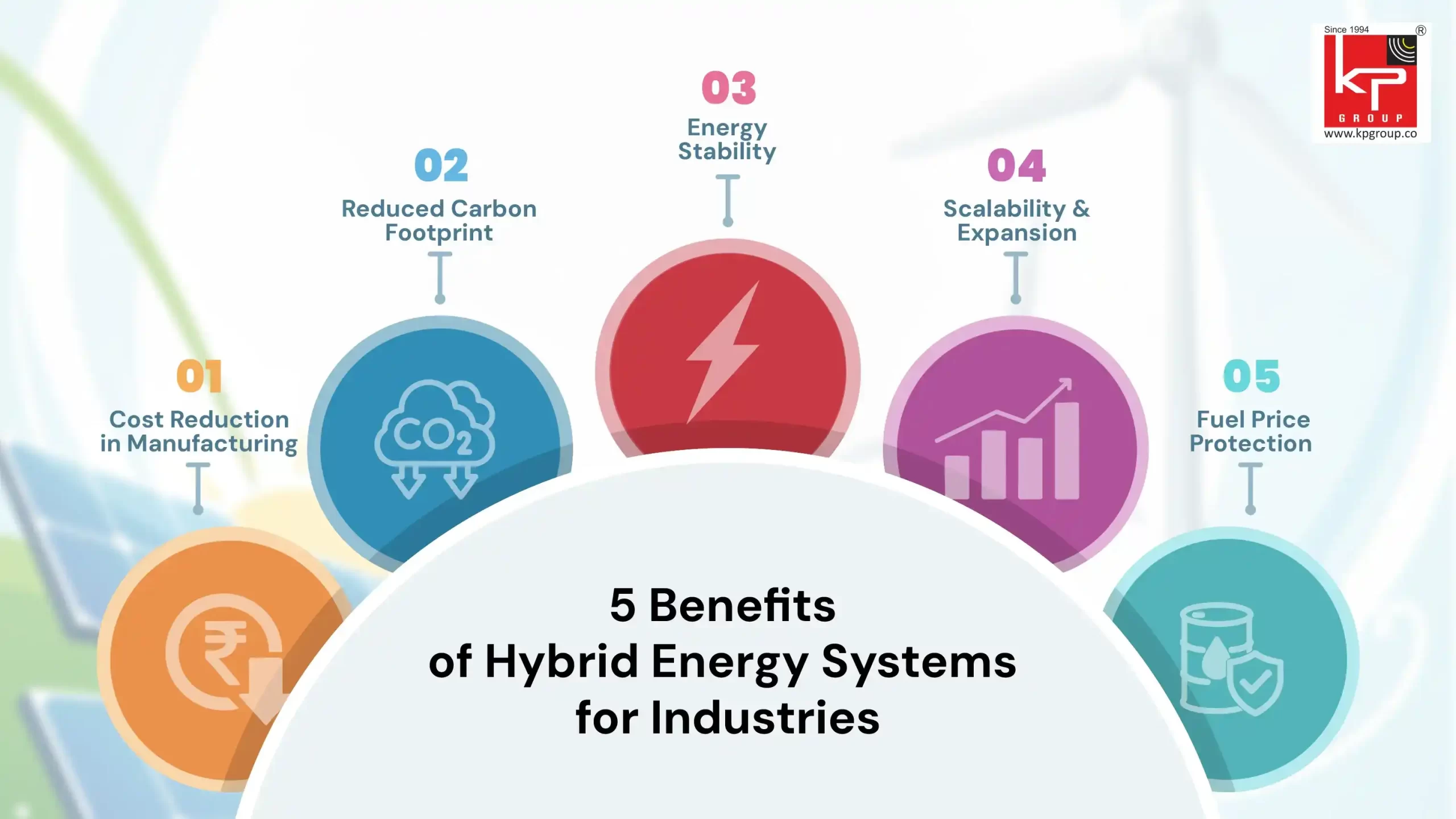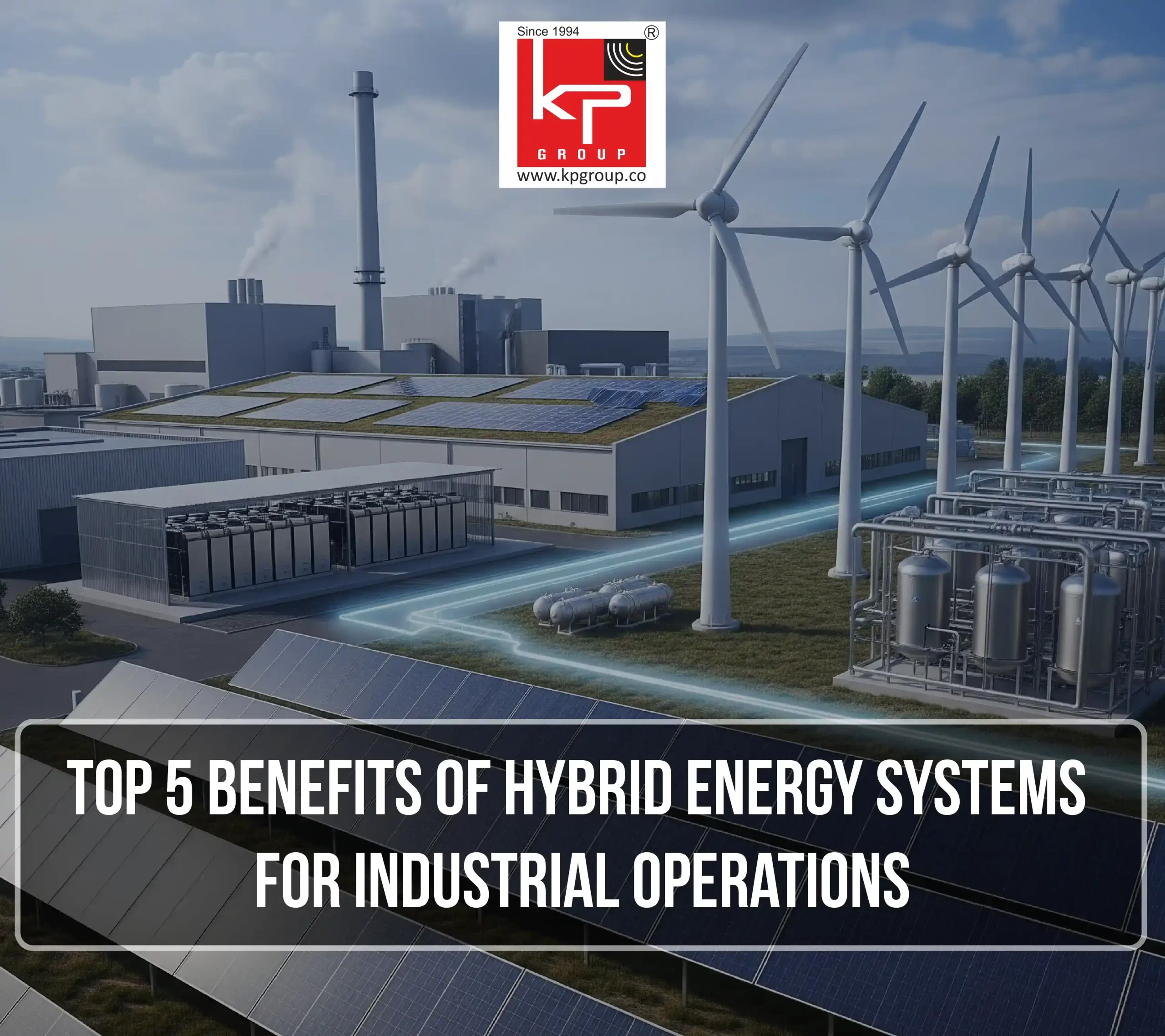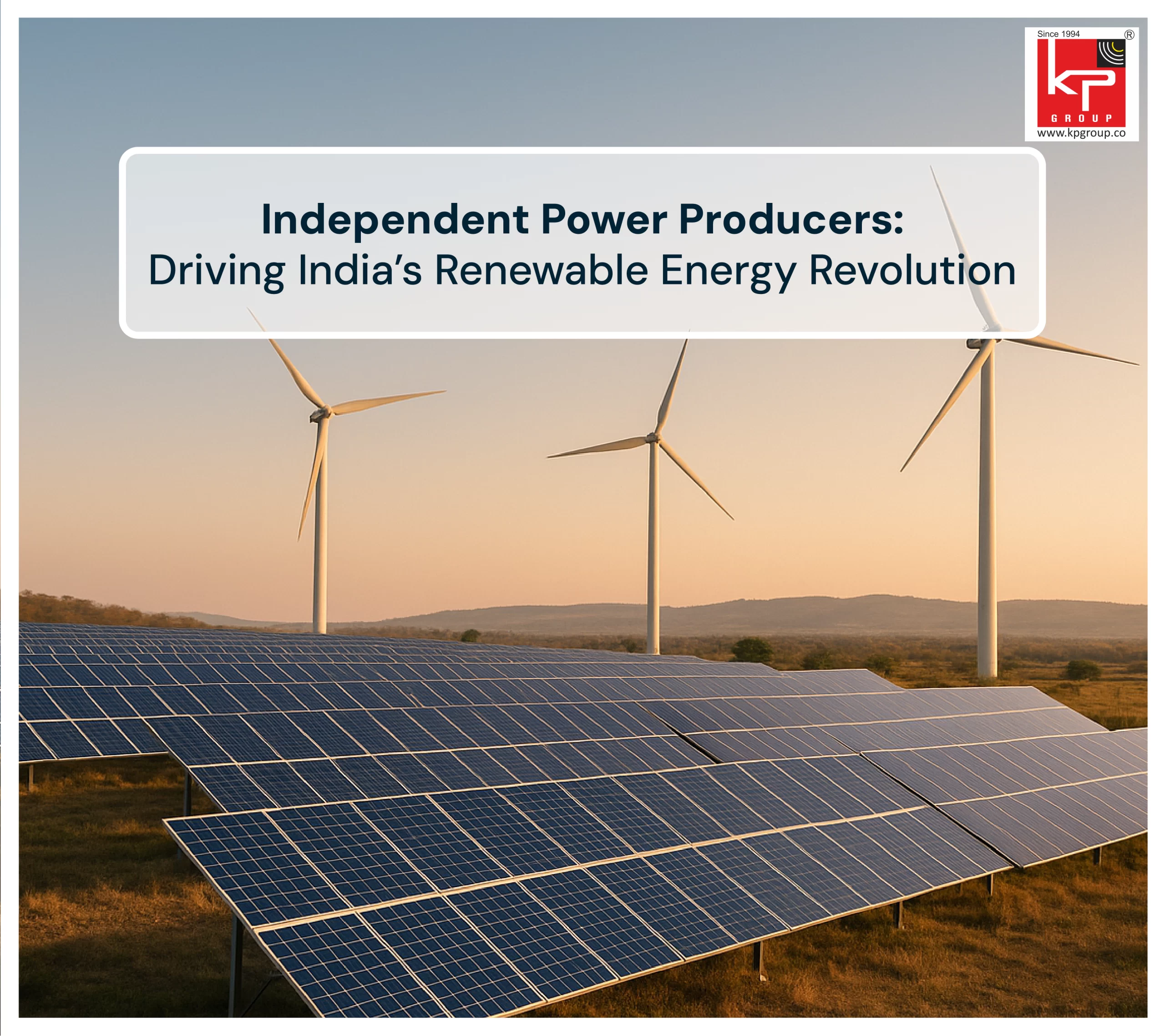Table of Contents
ToggleLarge-scale industries today face a crucial challenge of maintaining efficiency and a continuous source of power while also reducing carbon emissions for the smooth functioning of their industrial operations. Furthermore, the constant degradation of our natural habitat and environment underscores the need for these industries to transition to a combination of renewable energy sources. A solution to this is Hybrid Energy Systems (HES). It seeks to integrate multiple energy sources, like renewable and conventional—into a unified, intelligent system, one that ensures efficient, reliable power for industrial applications.
A hybrid energy is known to combine two or more sources of energy to harness the power of maximizing energy generation. The most common combination of hybrid energy is solar energy with wind energy, as it helps in the generation of power 24/7.
A hybrid energy system helps optimize energy production, reduces dependency on fossil fuel, lowers carbon emissions, and improves availability of electricity in a volatile market, which are among the few advantages it offers.
While switching to cleaner sources, one that lowers carbon emissions, should always be the objective for industrial owners. However, it is the solution for those individuals who face unstable electricity, pay higher electricity costs, and seek to be independent from the electricity grid.
- Higher electricity costs: if your industrial plant is located in a region that pays higher electricity costs, the installation of a hybrid energy system is your best solution. Since you are no longer needed to rely on the main grid, changes in facing power outages become almost negligible, by switching to battery storage when electricity from the grid goes down.
- Electricity Independence: Due to the complementary nature of energy generation, hybrid energy systems are known to utilize infrastructure more efficiently, making individuals less reliant on the power grid. To be able to utilize the nature of energy generation to its maximum capacity, solar energy harnesses the power of the sun during the day, while the turbines will generate energy with wind at night, making the reliance on the power grid almost like a fallback option.
How Do Hybrid Energy Systems Benefit Industries Today?

1. Cost Reduction in Manufacturing and Operations
Due to less or no dependence on fossil fuels for the production and operations in the factory, the production costs don’t fluctuate due to the sudden increase in price of fossil fuels, which happens quite often. Furthermore, as industry owners produce and use their electricity, they now have the option to store solar energy using Battery energy storage systems (BESS) and utilize their electricity during peak hours to avoid high energy charges. Over time, reduced dependence on fossil fuels enables a significant reduction in the electricity bill and ensures stable power generation for the long run.
2. Reduced Carbon Footprint and Environmental Impact
Opting to set up solar and wind hybrid systems today speaks about an individual’s intention towards sustainability and about their commitment to safeguarding Earth and their dedicated efforts in reducing greenhouse gas emissions. As more and more industries are complying and working hard to align with their environmental, social, and corporate goals to combat climate change, the closer we are getting closer to contributing to the country’s ambitious commitment to achieve 500 GW of non-fossil fuel capacity by 2030.
3. Increased Stability With Energy Generation
Hybrid energy systems provide energy generation from multiple source points, rather than simply relying on a single energy source. This supports industry owners to a large extent, as it reduces the risk faced by owners during power outages or fluctuations from any single source point.
In a country like India, where every region experiences different climatic conditions throughout the year, a solar and wind energy system could prove to be very beneficial, as one can adapt to the changing weather conditions more effectively rather than relying wholly on a single source of energy generation.
4. Smooth Expansion and Complementary Energy Generation
Hybrid energy systems have a huge potential for scalability, as the energy generation profile for both wind and solar energy goes hand in hand. According to an individual’s needs in business, hybrid energy systems (solar + wind) can scale simultaneously, as they allow for smooth progress with rapid expansion and alterations. Due to the inherent nature of a hybrid system, the complementary generation of energy plays a significant role in ensuring uninterrupted power reliability for factories at all times.
5. Mitigating Fuel Price Volatility
With increased dependence on fuel as a source of energy generation, the current times have witnessed an upward trend in fuel prices like never before. With no solar or wind energy in place, we only get more and more entangled in volatile fossil fuel markets. Installing hybrid solar systems provides individuals with a safe zone against a volatile and unpredictable market.
Power Your Industry With a Reliable Solar, Wind and Hybrid Energy System Today!
The Future of Hybrid Energy Systems in the Industrial Sector
In India, where there is an abundant supply of sunshine and wind, a hybrid energy system is the need of the hour to rationalize the power availability throughout the day. A hybrid energy system combines solar and wind energy, with a battery energy storage solution (BESS) to provide a sustainable industrial energy solution.
Predictable and consistent solar power output is used to cover the base load energy requirements of the user, while also helping charge up the batteries during times of low energy use or excess power generation. Wind energy, on the other hand, which is inconsistent by its very nature, is generally used to generate electricity. Storing electrical energy in batteries allows for consistent and on-demand power availability during times of low power generation.
To form a sustainable industrial energy solution, an advanced energy management system is used to help ensure the produced power is available at just the right time, be it straight from the renewable energy power plants or from the BESS.
With the current state of our environment, a consistent supply of clean, renewable energy, especially for large-scale industrial use, is an absolute need of the hour. Advancements in renewable energy production efficiencies have helped a great deal in making clean energy a viable option for commercial use. However, the naturally stochastic qualities of renewable energy sources present us with a hurdle in achieving our goal of providing a sustainable industrial energy solution.
Therefore, in order to overcome its shortfalls and create a long-lasting and consistent supply of clean, renewable energy, a hybrid energy system is determined to be the best approach. The statistically predictable nature of solar energy, combined with the sometimes erratic characteristic of wind energy, makes the two a perfect pair to form the backbone of a hybrid energy system.
Tying the two together is an advanced energy management system that utilizes a battery energy storage solution to provide consistent, reliable power throughout the day. The result of this four-pronged approach is a sustainable industrial energy solution!
Frequently Asked Questions:
Ans: Hybrid Energy Systems is known to help reduce carbon emissions, provide an uninterrupted power supply, and reduce costs associated with operations and maintenance.
Ans: Yes, through batteries, the unused/extra amount of energy can be stored and used when needed.
Ans: Yes, unlike on-grid energy consumption, a hybrid energy system stores additional energy via batteries. Hence, individual industry owners continue to receive a power supply even during power cuts.









